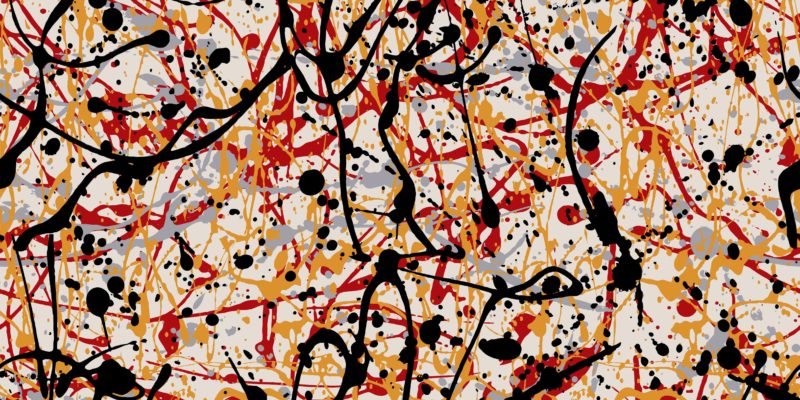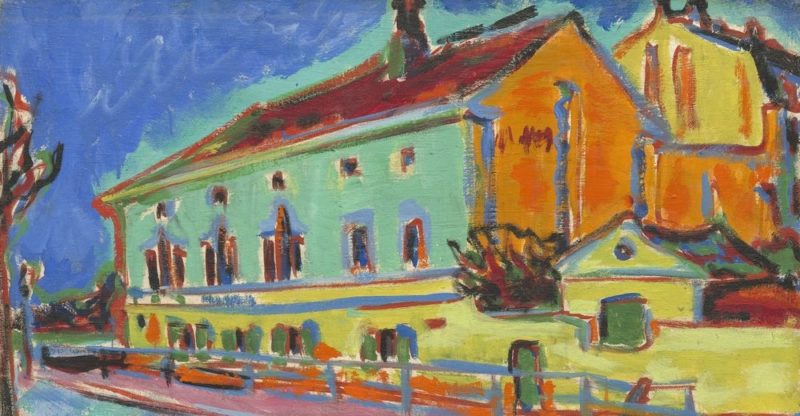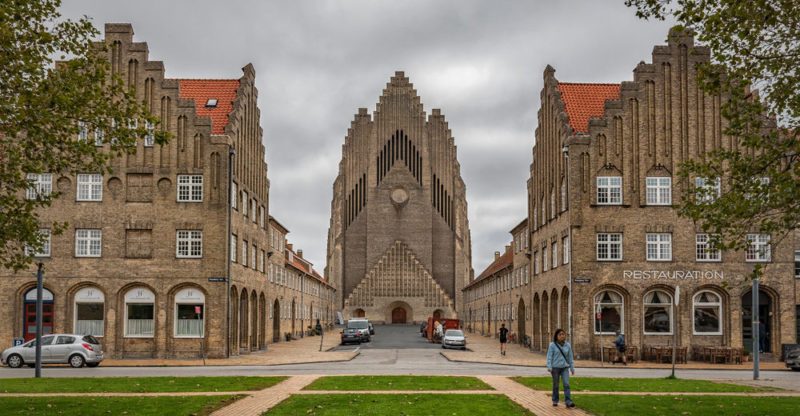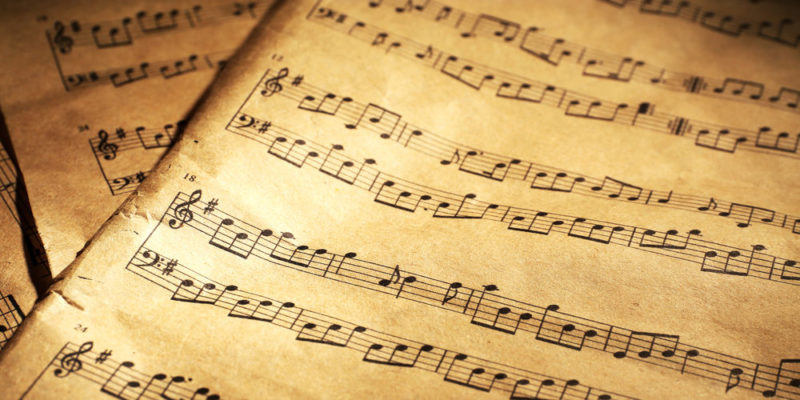We explain what expressionism art is, its historical context and works of art. Also, what are its general characteristics, authors and more.
What is Expressionism art?
Expressionism was an artistic and cultural movement that emerged in 20th-century Germany and manifested itself in a wide variety of disciplines: plastic arts, literature , cinema , music , theater , dance and photography , among others. .
Opposed to realistic impressionism and naturalism with its deterministic and rationalist pretensions, expressionism art defended a more intuitive and subjective posture of art , in which the interiority of the artist had a leading role. For this reason, expressionism art is understood more as an attitude towards art and life than a homogeneous artistic trend.
In fact, numerous creators of different styles, interests and tendencies congregated in expressionism art, which made it a heterogeneous movement without too many recognizable characteristics of its own.
Definition of Expressionism art
Expressionism art is usually understood as the deformation of the real to reflect the subjective content of the human being , that is: instead of faithfully copying the real, as realism proposed , or copying a glimpse of it (an "impression") as the Impressionism , the expressionists preferred to mold reality to make it reflect what was inside them: to obtain an "expression" of their subjectivity.
Historical context of expressionism art

Expressionism art arose during the first years of the 20th century , before the First World War and in the midst of the so-called "historical avant-garde".
At this time the rejection of positivist philosophy was gestated , a doctrine of rationalist thought that places its faith in scientific progress and advance as drivers of society , which resulted in an atmosphere of pessimism, criticism and loss of human values . , which expressionism art was able to reflect well.
This atmosphere would only worsen after the First World War and expressionism artwould broaden its horizons to cinema and theater, becoming a fairly central movement in the imaginary of the time . This would last until World War II , as it would be classified by the Nazis as "degenerate art" and linked to communism ; though it would briefly re-emerge in the United States as abstract expressionism.
Expressionism art style
Although expressionism art brought together numerous artists of different aesthetics , the concern for the subjective content of the work over harmony and the resemblance to reality of its forms always prevailed in the movement. The importance was attached to the "interior" vision of the artist and not to the imitation of everyday life.
This in some cases could produce more figurative or more abstract art , according to the interests and styles of the artist, and even in artistic forms such as literature or architecture , they implied a true artistic renewal that tended towards the abstract and the reflective.
Expressionist painting art

The field of birth and the most prominent expressionism art was painting . Its beginnings were between two groups of German artists: Die Brücke (“The Bridge”) and Der Blaue Reiter (“The Blue Rider”) . Already then color, dynamism and sensations were outlined as the great resources of this pictorial trend.
The expressionist painters were very active and diverse , they made abundant exhibitions and had a notable presence in the main German cities . This trend would later spread to other countries such as France (with the School of Paris), Belgium (particularly around Selection magazine ), Czechoslovakia, Switzerland, Finland, Hungary, Poland, Sweden and, in the Americas , the United States. , Argentina , Colombia, Mexico , Ecuador and Brazil .
Expressionist architecture

Expressionist architecture was particularly cultivated in Germany, Denmark, Holland, Belgium, Austria and Czechoslovakia , strongly influenced by modernism and criticism of functionalism, which Paul Scheerbart accused in his essay Glass Architecture (1914) of lacking artistry.
This trend took advantage of the mass production of different construction materials such as bricks, steel and glass at the time , to expand their possibilities and experiment with utopian perspectives and more daring forms, often venturing into certain stylistic excesses.
Expressionist sculpture art
In expressionism art, sculpture consisted of an individual break from traditional forms of sculpting , rather than a uniform trend. Around 1920 this derived more than anything in abstractionism, in pursuit of a liberation of forms that would provide fullness to artistic expression.
Expressionist literature art

The literature of expressionism art embraced more than any other form of art the crisis of existential emptiness prevailing in the society of the time . This was shaped through inquiries into disease, madness and deformity, which often led to existential absurdity.
The expressionist narrative was fundamentally divided between an experimental and reflective side , more given to the abstract and the subjective, and another naturalistic and objectivizing side, which emerged as a reaction. The peak of this trend was the appearance of illogical, labyrinthine works, such as that of Franz Kafka.
In poetry , the aesthetics of the ugly and the grotesque, the deformed and the firm expression that does not adhere to grammatical or stylistic rules were assumed . Metrics and the sonnet were maintained, although free verse also appeared.
And the expressionist dramaturgy abandoned the realistic representation of naturalism and tried to make the theater a means to renew the public ideologically and philosophically . Thus, works with very free themes were undertaken, with a great deal of detachment from logic and an abundant load of anguish, despair, loneliness and suffering in their characters and situations.
Expressionist music art

Another outstanding field of expressionism art was music, in which they saw the opportunity to create a language stripped of words and verbal meanings , a direct and authentic route towards the subjectivity of the artist.
Therefore, it was intended to free music from its tonality and rules and conventions , allowing it to reflect the state of mind of the artist more than anything else and thus giving rise to the birth of twelve-tone music. The latter is a musical scale inspired by the twelve tones of the chromatic scale, used in series, disorderly, but without repeating a single one before the entire scale has sounded.
Other expressionist arts

Dance, opera and, above all, cinema were influenced by expressionism, which freed them from formal conventions and allowed for a freer exploration of the feelings expressed.
In the field of cinema, especially, German expressionism produced notable works, resorting to gloomy themes and dreamlike, surreal representations, whose scenarios were more similar to a painting than to reality itself, deforming according to the expressive needs of the plot.
Representatives of expressionism art
A brief list of the main authors and artists of expressionism includes:
- Painting: Otto Mueller, Georges Rouault, Paul Klee, Vasili Kandinski, Amedeo Modigliani, Marc Chagall, José Clemente Orozco, Diego Rivera, David Alfaro Siqueiros, Piet Mondrian, Hans Arp, Max Ernst, Karl Hofer, Franz Marc, Egon Schiele, Oswaldo Guayasamín, among many others.
- Architecture: Bruno Taut, Walter Gropius, Erich Mendelsohn, Hans Poelzig, Hermann Finsterlin, Fritz Höger, Hans Scharoun, and Rudolf Steiner.
- Sculpture: Ernst Barlach, Wilhelm Lehmbruck, Käthe Kollwitz, Bernhard Hoetger, Renée Sintenis, Jacob Epstein, and Antoine Bourdelle.
- Literature: Franz Kafka, Thomas Mann, Alfred Döblin, Gottfried Benn, Ramón María del Valle-Inclán, Camilo José Cela, Georg Trakl, August Stramm, Bertolt Brecht, Max Reinhardt, among others.
- Music: Arnold Schoenberg, Alban Berg, Anton von Webern, Kurt Weill.
- Movie theater: Robert Wiene, Paul Wagener, Fritz Lang, Ewald André Dupont, Robert Siodmak, among others.
Luke is passionate about fostering student involvement and connection. He studied psychology for his major and likes learning about the past. Luke aims to specialize in artificial intelligence and cybersecurity. .
Leave a reply
Your email address will not be published. Required fields are marked *Recent post

Sport: What Is It, Types, Risks, Features, Characteristics and Examples

Dogs: Emergence, Features, Characteristics, Feeding and Breeds

Story: Definition, Elements, Structure, Features and Characteristics

